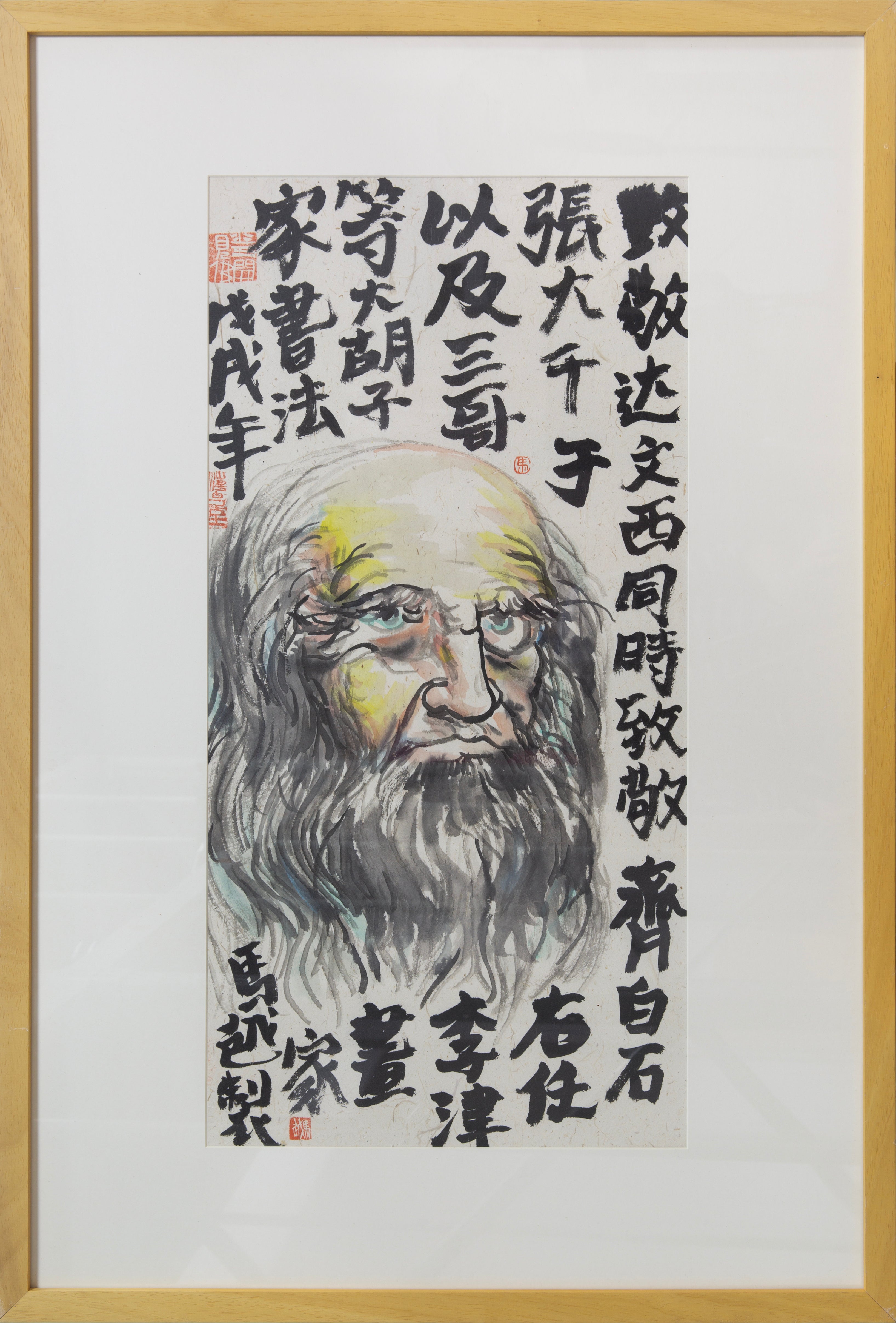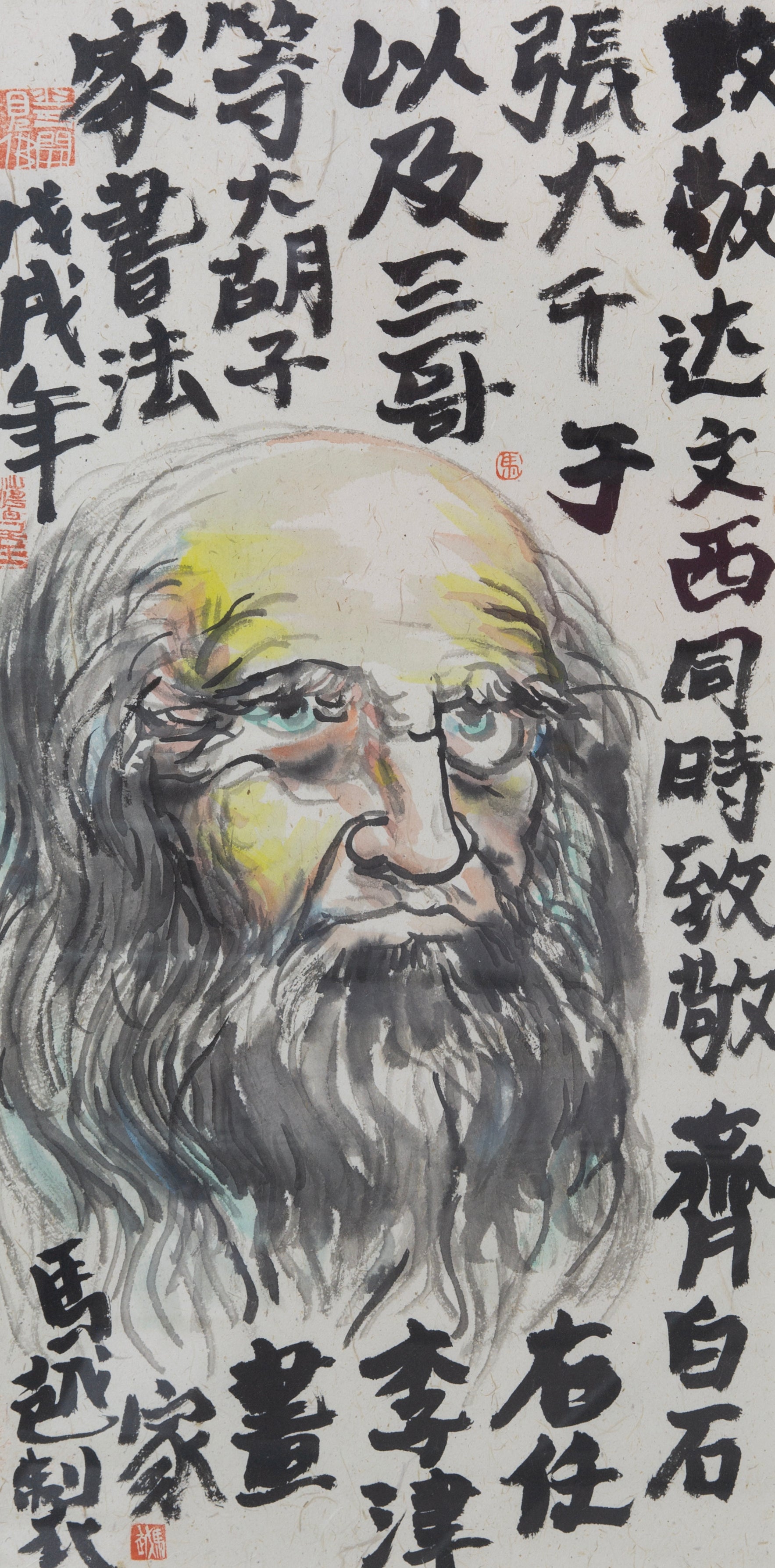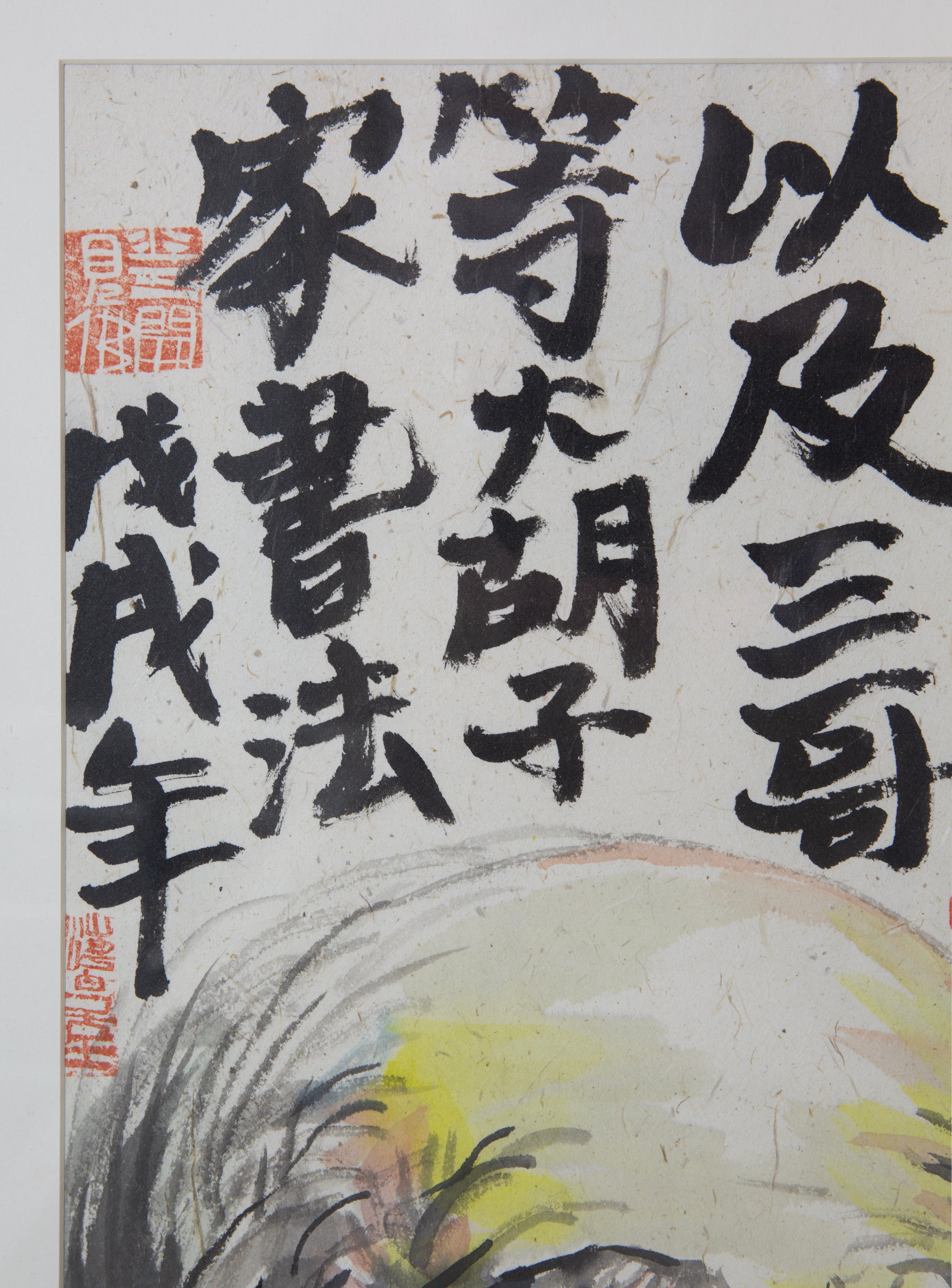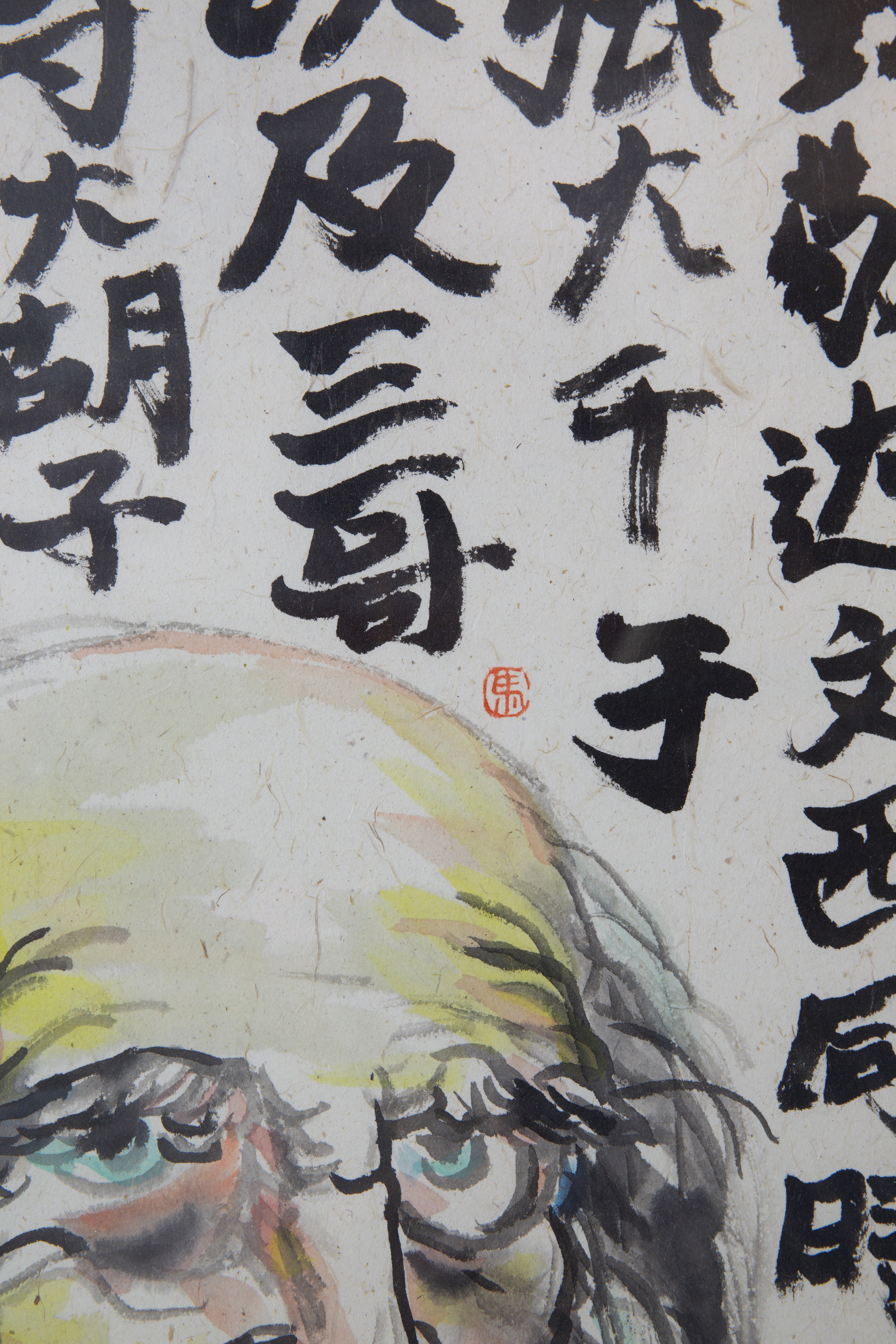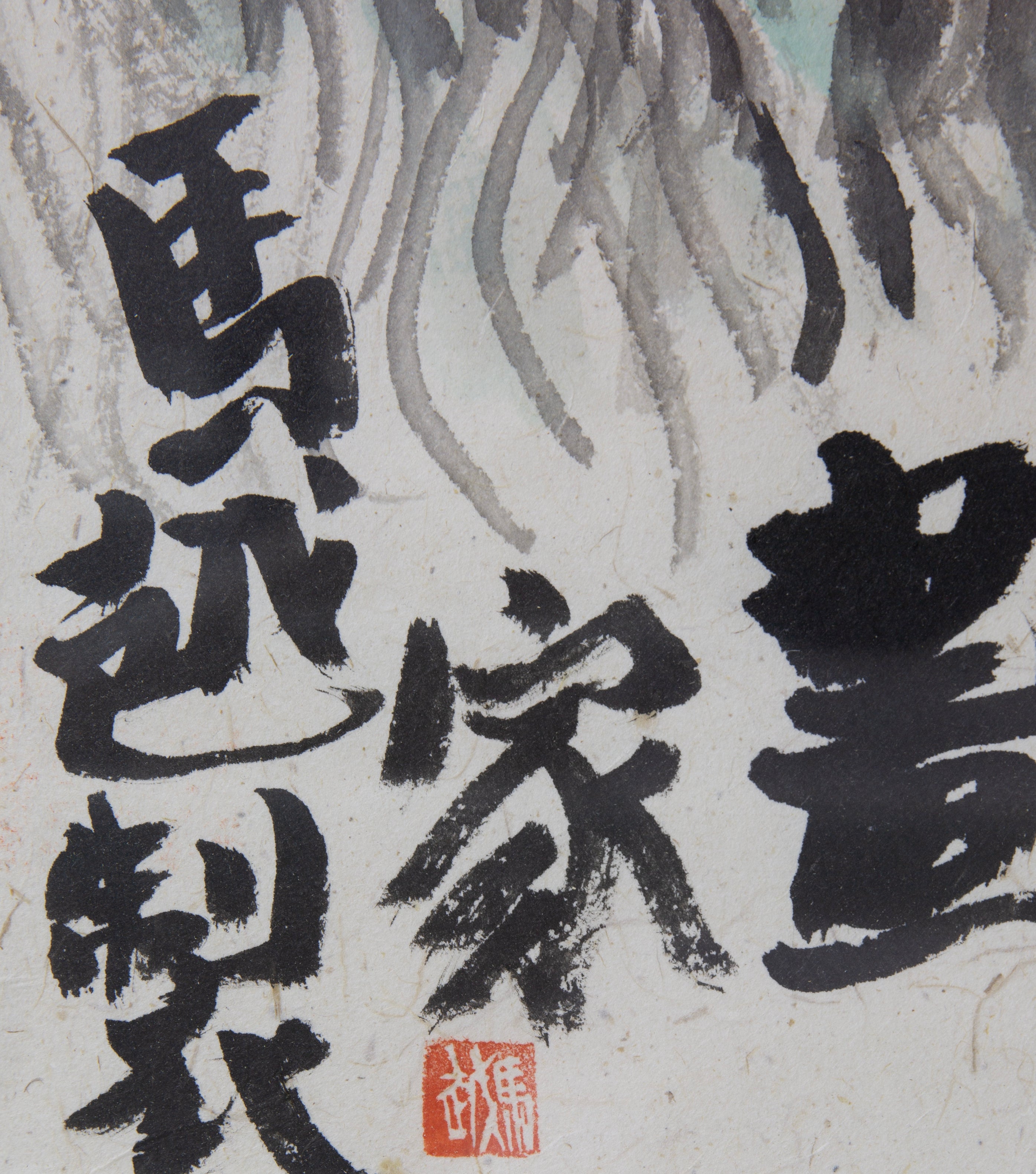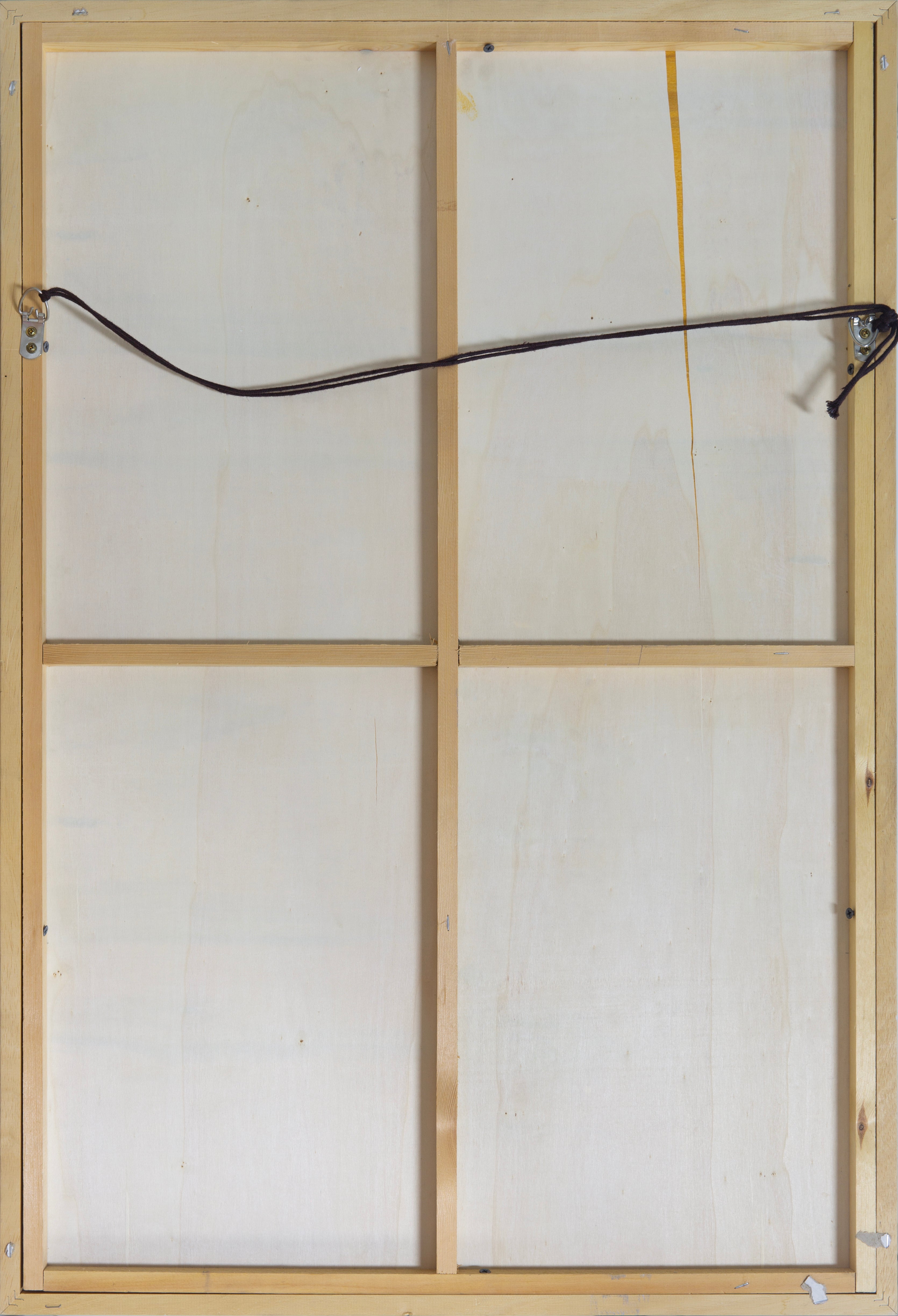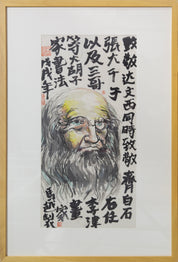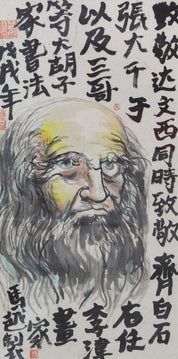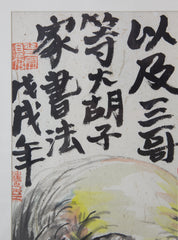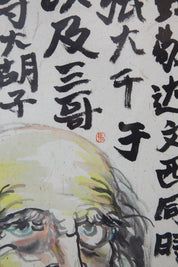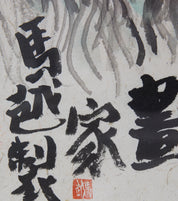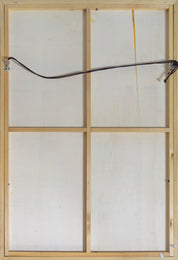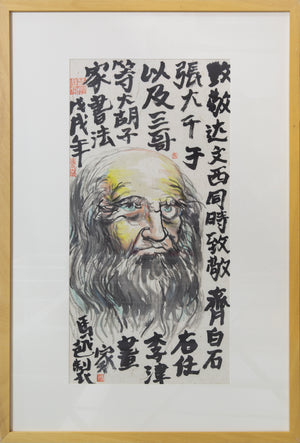Da Vinci
Ma Yue
Artwork Details
Artwork Description
Title: Da Vinci
Artist: Ma Yue
Date: n.d.
Medium: Ink and watercolor on paper
Dimensions: 70 x 35 cm (27.56 x 13.78 in)
1. Artwork Identification
Da Vinci by Ma Yue presents a striking fusion of East and West through a vivid ink-and-watercolor portrait of Leonardo da Vinci, rendered in expressive brushwork and surrounded by bold Chinese calligraphy. The portrait captures da Vinci’s iconic long beard, furrowed brow, and thoughtful gaze, blending Western Renaissance likeness with the aesthetics of Chinese literati painting.
2. Artistic Style and Influences
Ma Yue skillfully merges traditional Chinese ink techniques with Western portraiture. The vivid brushstrokes and dynamic color washes evoke the energy of expressionist watercolor, while the surrounding calligraphy, composed in a powerful xingshu (semi-cursive) style, situates the work within the tradition of Chinese scholar-artist painting. This cross-cultural homage demonstrates both reverence and reinterpretation, bridging two historically rich artistic legacies.
3. Historical Context
Although undated, this work can be viewed within the broader context of 21st-century Chinese artists who engage with global cultural figures to explore themes of cross-cultural respect and intellectual legacy. Leonardo da Vinci, a universal symbol of scientific and artistic genius, becomes here a subject of traditional ink portraiture, suggesting admiration that transcends cultural boundaries and timelines.
4. Provenance
Provenance documentation can be provided upon contact.
5. Condition and Conservation
The artwork is in very good condition. The paper surface shows no signs of foxing, creases, or fading. Framed behind protective glass with a wide white mat, the presentation supports long-term preservation and display.
6. Artistic Significance
Ma Yue’s Da Vinci is a compelling example of cultural dialogue through art. The juxtaposition of ink portraiture and Chinese calligraphy conveys more than admiration—it proposes a visual synthesis of two traditions. As an homage, it transcends mere depiction, embodying the universal admiration for creative genius while reinforcing the artist’s own identity within a distinctly Chinese mode of expression.

